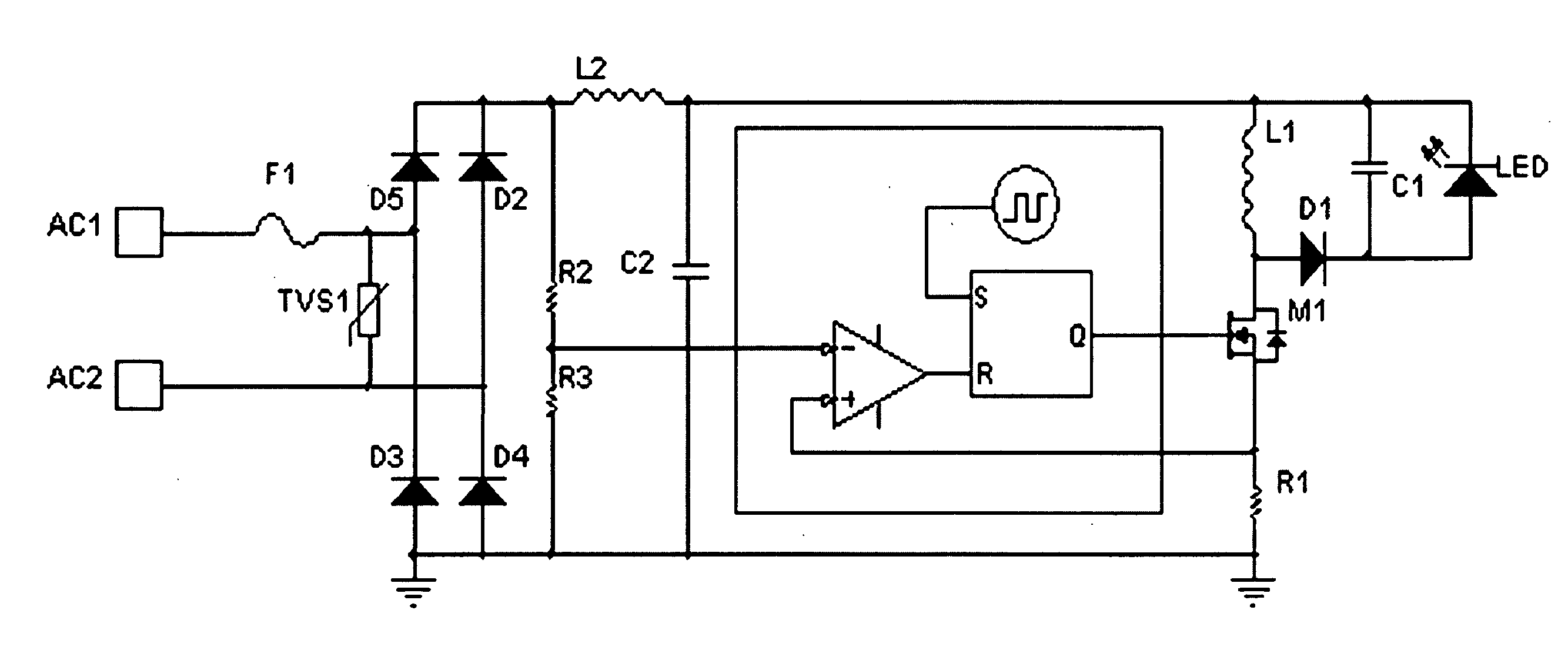High efficiency light source with integrated ballast
a ballast and high-efficiency technology, applied in the field of power supplies, can solve the problems of poor power factor, less efficient load of low-power factor, increased losses in power distribution systems, etc., and achieve the effect of improving driver efficiency and circuit efficiency
- Summary
- Abstract
- Description
- Claims
- Application Information
AI Technical Summary
Benefits of technology
Problems solved by technology
Method used
Image
Examples
Embodiment Construction
[0037]FIG. 4 is a schematic diagram showing an embodiment of the present invention. A buck-boost configuration is shown operating from an AC input voltage across input terminals AC1 and AC2, and driving an LED. For instance, with a 12 VAC input across AC1 and AC2, the LED may have a forward current of 400 mA and a forward voltage of 13 volts. A buck-boost topology is required since the rectified AC line voltage varies above and below the load voltage. The central portion of the circuit of FIG. 4 is enclosed in a box, wherein the box represents a switching power supply driver chip (“driver chip”), for instance the Supertex Inc. HV9910 or equivalent. The PWM generator of this driver chip may be represented functionally as an SR latch, oscillator, and comparator. The LED shown in all figures herein may also represent other kinds of loads, such as an array of LEDs or other type of solid state light source. A transient voltage suppressor (TVS) protects the circuit from voltage spikes on ...
PUM
 Login to View More
Login to View More Abstract
Description
Claims
Application Information
 Login to View More
Login to View More - R&D
- Intellectual Property
- Life Sciences
- Materials
- Tech Scout
- Unparalleled Data Quality
- Higher Quality Content
- 60% Fewer Hallucinations
Browse by: Latest US Patents, China's latest patents, Technical Efficacy Thesaurus, Application Domain, Technology Topic, Popular Technical Reports.
© 2025 PatSnap. All rights reserved.Legal|Privacy policy|Modern Slavery Act Transparency Statement|Sitemap|About US| Contact US: help@patsnap.com



